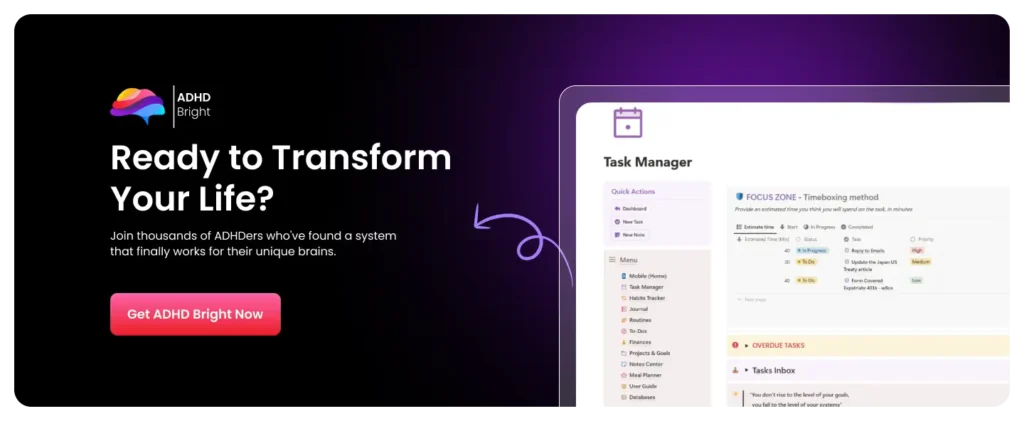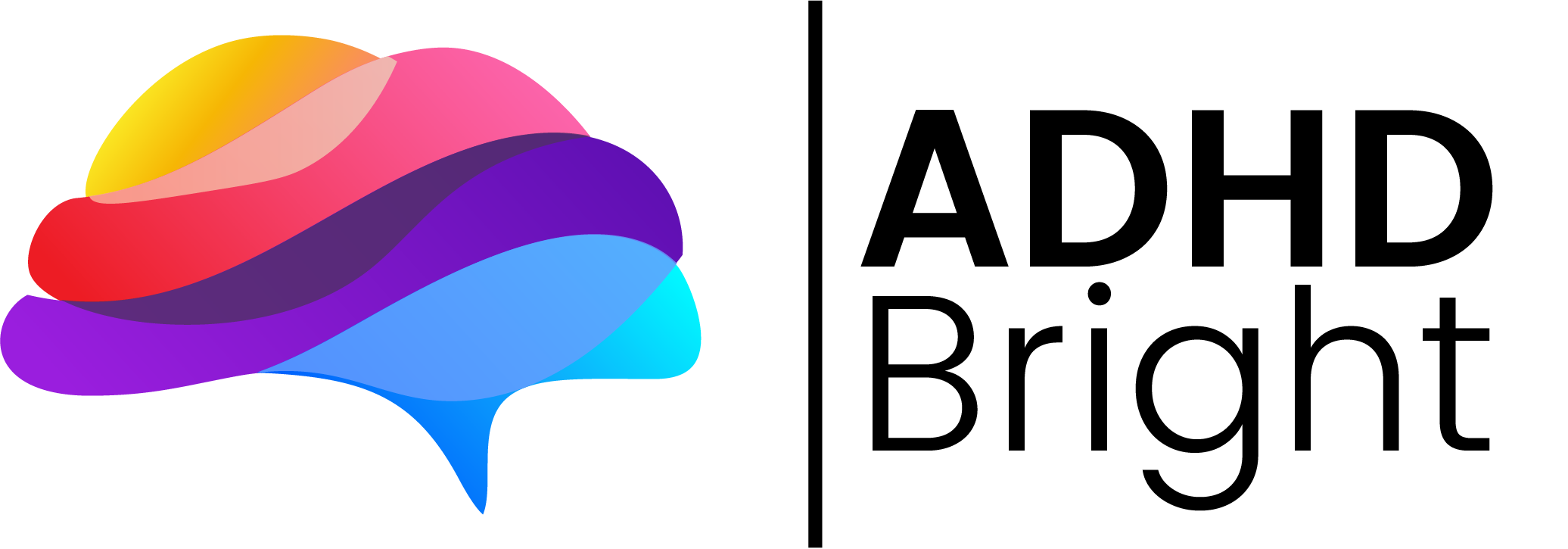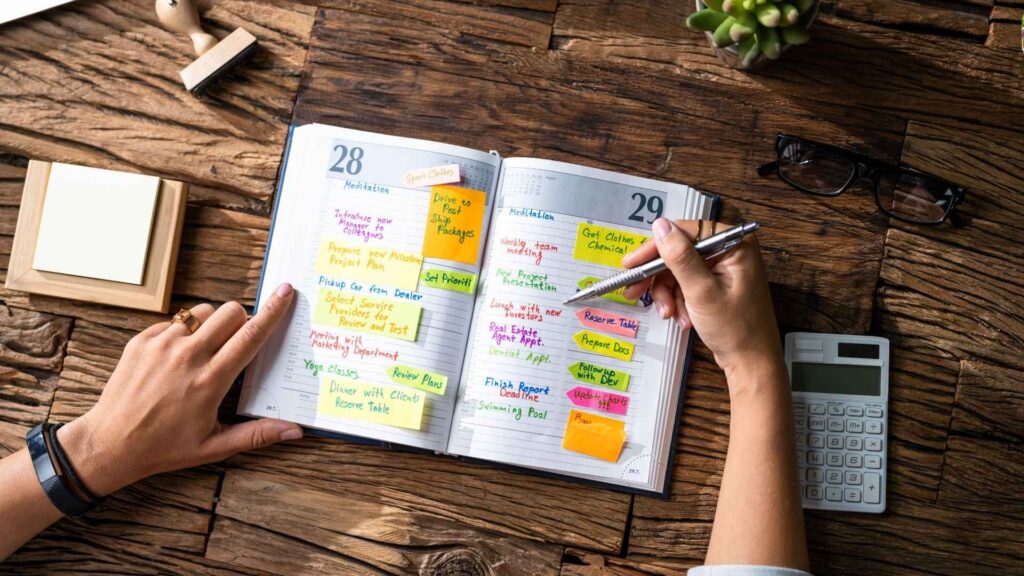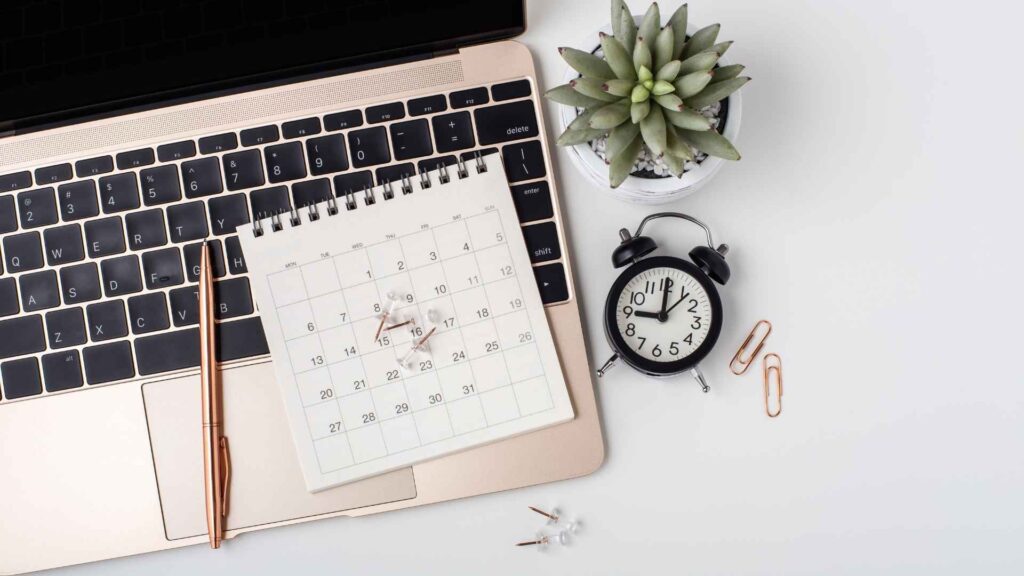TL;DR
If you have ADHD, using a planner isn’t about rigid schedules — it’s about a system that fits how your brain works. Write everything down immediately, plan by time not tasks, and add 30% more than you expect. Keep to-do lists short, plan by energy, and keep your planner accessible everywhere. The right ADHD planner helps you manage time effectively, build consistent routines, and stay organized in daily life.
Most of us with ADHD don’t struggle with planning. We struggle with using the plan. Our brains crave novelty, jump between ideas, and forget what we meant to do five minutes ago. A planner can help, but only if it’s designed around how the ADHD brain and attention deficit hyperactivity disorder actually work.
Here’s how to use a planner effectively, supported by neuroscience, ADHD coaches, and real people who’ve learned to manage ADHD-related challenges in everyday life.
1. Capture everything immediately
The ADHD brain has limited working memory, so if we don’t write things down, they vanish. One user said, “If I don’t write it down right away, it’s like it never existed.”
This is why it’s crucial to use your planner regularly and record tasks, ideas, and appointments the moment they appear. You can use a paper planner if you like handwriting or a digital planner for quick capture on the go. Both work — what matters is that you make it part of your daily routines.
Neuroscience calls this “working memory offload.” It helps you maintain focus, reduce anxiety, and stay present. Keep your planner visible and easy to open so you can return to it often.
2. Plan by time, not just tasks
ADHD brains don’t sense time accurately, a challenge known as time blindness. Writing a long to do list isn’t enough; we need to see how long each task will take.
Instead of rigid schedules, use timeboxing. Estimate how much time something needs, then add 30 percent more. If you think it takes 30 minutes, give yourself 40. ADHD adults usually underestimate, which leads to frustration and missed scheduled time.
This strategy helps you manage time effectively and builds realistic awareness of time slots and energy levels. It’s one of the most practical time management methods for managing ADHD and reducing stress in daily life.
3. Keep to-do lists short and rewarding
Overloaded to do lists make us feel overwhelmed and cause paralysis. The 1-3-5 rule works better: one big task, three medium, five small. It helps you prioritize and get small wins that boost dopamine.
Checking off each task releases a reward signal in the brain, helping you stay motivated. That’s why adhd planners and daily planners that show progress or streaks work better than blank notebooks. Visual progress is a form of goal setting that keeps the planning process engaging.
You can also group household chores, calls, and appointments into categories for faster planning and less mental clutter.
4. Build consistent routines
Consistency supports focus. Set a time to open your planner each day, like after breakfast or before bed. This makes using it part of your daily routines and evening rituals, not just another task on the list.
Experts call this “habit stacking.” Linking planning to something you already do strengthens the habit. Over time, it reduces decision fatigue and strengthens executive function — the part of the brain that organizes actions and regulates attention.
One user said, “I stopped trying to be perfect. I just open my planner every morning no matter what, and now it finally works.”
Adding a small habit tracker or habit trackers page helps track new behaviors and visualize progress toward long-term goals. Even seeing a streak form can encourage a new habit to stick.
5. Plan by energy, not the clock
Our energy fluctuates throughout the day. Some hours we’re in deep focus, others we can barely start. Instead of scheduling by the clock, match your work to your energy levels.
Do creative or hard tasks when you feel alert, and handle admin or household chores when your brain is slower. One user said, “I stopped fighting my off days. I schedule light tasks when my brain feels foggy.”
Neuroscience shows that dopamine and attention naturally rise and fall. When we plan around those rhythms, we can manage ADHD more efficiently and prevent burnout.
6. Expect tasks to take longer
Because ADHD impacts how we perceive time, things almost always take longer than we think. Add buffer time between appointments and build flexible time slots into your daily planner.
Following the 30% rule keeps expectations realistic and reduces the emotional crash that comes when we fall behind. Building margin into your day supports mental health and keeps you calm when things shift unexpectedly.
7. Make it accessible everywhere
Traditional paper planners feel grounding but are easy to leave behind. Digital planners or electronic planners synced with digital calendars and tools like Google Calendar are the real game changer for ADHDers who live active lives.
Add important events or recurring events the moment they pop up. You can check your schedule on your phone, tablet, or laptop, which means you can plan your week from anywhere.
Digital calendars also give you visual cues and color coding that help you see priorities quickly. Whether you prefer paper planners or mobile tools, the key is to make it frictionless and always within reach.
8. Use visual structure
The ADHD brain thrives on clarity and simplicity. Choose planners with flexible layouts, ample space, and weekly layouts that show everything at a glance.
Color coding, icons, and symbols are visual cues that make information easier to find. Some people even use sticky notes or a bullet journal system to highlight important events and progress. The right visuals keep you grounded and help with memory retention.
The perfect planner for you isn’t the fanciest one — it’s the one you actually return to. Simplicity, visibility, and a layout that matches your individual preferences matter most.
9. Make planning simple and forgiving
The best planners are designed to be used, not admired. ADHDers need structure that forgives missed days and celebrates return, not perfection. Build a system that welcomes you back without guilt.
Your planner is an important tool for self-regulation and growth. Whether you use paper planners, a digital calendar, or a hybrid system, planning should feel like support, not punishment.
The best planners help you stay organized, focus on daily tasks, and move through everyday life with more calm and control.

Bottom line
Learning how to use a planner with ADHD is about finding the right planner for how your brain works. Capture tasks instantly, plan time realistically, create consistent routines, and make your system visible and easy to use.
Planning isn’t about perfection. It’s about progress, compassion, and building a structure that helps you manage ADHD, use your time effectively, and feel balanced in both work and daily life.
If you’re still looking for the right planner for ADHD, check out our guide on how to choose the best planner for ADHD. It compares paper planners, digital planners, and tools like the Task Manager and Habit Tracker to help you find your best fit.



